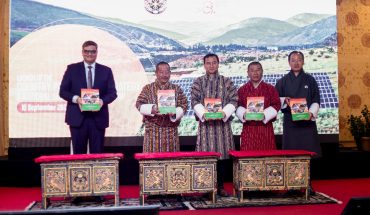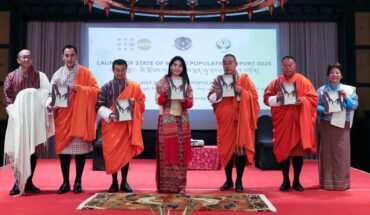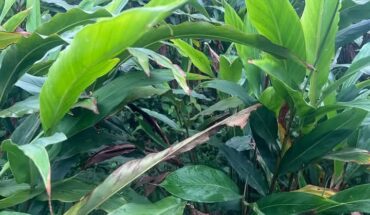
The journey of Rukha village, a story of Tarayana’s endearing grassroot approach to development
DAWA ZANGMO
Thimphu
Her Majesty Gyalyum Dorji Wangmo Wangchuck inaugurated an exhibition showcasing the Rukha Village Model last week.
The exhibition was held at Dungkar Dzong in Paro as part of the international conference themed “Operationalizing Gross National Happiness (GNH).”
The event drew wide participation from government representatives, civil society, private sector stakeholders, and international development practitioners.
At the heart of the exhibition was the Rukha Village Model an integrated rural development initiative that blends tradition, ecology, and spiritual values.
The model is a living embodiment of Bhutan’s GNH philosophy, focusing on building community resilience, promoting environmental conservation, and preserving cultural heritage.
In her keynote address, Her Majesty the Gyalyum Dorji Wangmo Wangchuck underscored the importance of harmonizing tradition with progress.
“Development must never come at the cost of our cultural values and environmental integrity,” she said, adding that the Rukha model illustrates how Olep communities can chart their own path to prosperity through collective action and indigenous wisdom.
Rukha, a small village nestled deep within the Jigme Dorji National Park (JDNP) in Wangduephodrang, once faced severe poverty, isolation, and marginalization. It was home to the community a group long considered at risk of cultural extinction.
In 2007, the Tarayana Foundation began work in Rukha, guided by the vision of Her Majesty, who had visited the area as early as 2001 and personally witnessed the villagers’ harsh living conditions.
Back then, Rukha had just 18 households with 147 inhabitants. The community had no road access, no electricity, poor sanitation, and substandard housing. Children studied, ate, and slept in the same cramped spaces.
Access to food was minimal, and hygiene levels were alarmingly low, despite the presence of running water taps installed by government departments.
“This disconnect between different sectors one agency installing taps, another responsible for hygiene education without coordination is not just a Bhutanese issue; it’s a global one,” said Sonam Pem, Executive Director from the Tarayana Foundation during conference.
What sets the Rukha model apart is its emphasis on bottom-up development. Rather than imposing external solutions, Tarayana officials first spent time listening and building trust.
When villagers were asked about their most pressing needs, they initially mentioned roads and electricity both beyond Tarayana’s capacity.
However, further dialogue revealed that housing was the critical need, although community members were too humble to say so directly.
In response, Tarayana initiated a housing program using locally available materials. Community members were grouped into teams and used a lottery system to determine the construction sequence, ensuring transparency and fairness.
Villagers actively participated in building each other’s homes, fostering a strong sense of ownership, pride, and solidarity.
Within two years, all 10 families had proper homes. Building materials, including roofing sheets, were carried in by foot or horseback.
Without access to electricity, solar lighting systems were introduced. Sanitation was addressed through hygiene awareness campaigns and practical demonstrations on how to use water taps an unfamiliar concept to this formerly nomadic community.
As health and sanitation improved, children started attending school regularly, and families began taking pride in their surroundings.
“Development isn’t just about infrastructure,” Executive Director Sonam Pem noted. “It’s about dignity, empowerment, and belief in one’s own potential.”
With basic needs met, the focus shifted toward livelihood development. Villagers began producing bamboo handicrafts and reviving traditional fish-smoking techniques.
Tarayana supported marketing efforts by facilitating participation in trade fairs and skill development workshops.
Over time, confidence grew. The community proposed a business plan to acquire a power tiller to transport goods across the river in anticipation of a future road.
Although Bhutan’s central bank lacked a microfinance policy at the time, Tarayana issued a loan and helped establish a small transport cooperative.
Skilled workers from nearby areas were brought in to train villagers in carpentry and masonry. Many of the young men now work in construction projects across Bhutan, generating income and further building local expertise.
Beyond economic and social change, Rukha has undergone a profound cultural transformation. Previously followers of the Bon religion, the villagers voluntarily embraced Buddhism and built a communal temple.
A community hall was also constructed, serving as a venue for gatherings, ceremonies, and decision-making processes.
The once-isolated village has become a thriving and confident community. “We didn’t design a solution in our office and deliver it. We co-created it with the people,” said Executive Director of Tarayana Foundation Sonam Pem. “That is the essence of sustainable development.”
Situated within JDNP, Rukha challenges conventional conservation norms. Globally, protected areas often lead to displacement of local residents.
In contrast, Bhutan has pioneered a model that integrates people as stewards of the environment.
Sangay Dorji, Technical Director of Tarayana Foundation, emphasized this unique conservation ethic. “In Bhutan, people are part of the landscape. Their traditional practices ensure ecological balance,” he said.
Villagers in Rukha align their daily lives with the four classical elements earth, water, fire, and air. This worldview fosters a spiritual and practical sense of environmental responsibility.
Sangay Dorji pointed to the critically endangered orchid Cypripedium, globally estimated to have only 50 individuals left. “During our last visit, we counted over 100 in Rukha,” he said. “This is possible because of their balanced interaction with the environment.”
The orchid flourishes in semi-disturbed habitats, such as those maintained through grazing, tree cutting, and fire all managed traditionally by the villagers. This has created an optimal microhabitat that has allowed the species to thrive.
To honor Rukha’s achievements, Her Majesty the Gyalyum named an interpretive park in the village, celebrating His Majesty the Fourth King’s 50th birth anniversary.
A digital village dashboard was also launched, offering real-time data on demographics, housing, land use, and environmental indicators.
During the exhibition, Tarayana shared results from a recent GNH survey in Rukha, using methodology developed by the Centre for Bhutan & GNH Studies.
“The happiness index in Rukha surpasses the national average,” said Sangay Dorji, attributing it to culturally sensitive and inclusive development.
While the Rukha model has inspired over 1,000 replications across Bhutan with requests for over 2,000 more homes new challenges have emerged. Among them are the digital divide, poor waste management, and the risk of uncritical replication.
“Digital access brings opportunities, but without digital literacy, it can also harm,” Sangay Dorji stated. He also pointed out the increase in packaged goods waste. “Now that access has improved, waste generation has increased, but disposal systems have not kept pace.”
He stressed that the Rukha model cannot be transplanted wholesale into other communities. “Every village has its own social fabric. Replication must be context specific, or it risks rejection.”
Experts at the exhibition reiterated the need for a holistic approach to rural development. This includes investing time in understanding community dynamics, supporting indigenous knowledge systems, and encouraging local ownership.
The presence of Her Majesty lent the initiative strong moral and institutional support. As a lifelong advocate for rural upliftment and environmental conservation, Her Majesty’s involvement gave the model both legitimacy and visibility.
The exhibition served not only to showcase success but also to facilitate knowledge-sharing, policy discussions, and future collaboration.
Government officials, NGOs, and international partners explored ways to scale the approach while maintaining its core values.
As Bhutan faces global pressures economic modernization, climate change, and cultural shifts the Rukha Village Model offers a tested, people centered blueprint for resilience and sustainability.
“It is not about charity or handouts,” said Sangay Dorji. “It’s about empowering communities to become the architects of their own development.”
The journey of Rukha from a forgotten village to a nationally recognized model is a powerful reminder that when development is done with humility, respect, and community involvement, it not only changes lives but also shapes the future.





